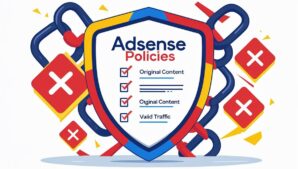The digital landscape thrives on fresh, engaging content. For marketers, bloggers, and creators, the pressure to innovate is relentless. Enter AI-powered tools—game-changers that analyze trends, predict user preferences, and generate ideas with surgical precision. This article explores how AI reshapes content creation, offering actionable strategies to harness its potential while addressing ethical and practical challenges.
The Role of AI in Modern Content Creation
AI tools like those listed in our Best Free AI Content Generators guide eliminate writer’s block by automating ideation. They scan global data—social media, search trends, and competitor strategies—to identify high-impact topics. For example, tools leveraging Google Trends pinpoint rising keywords, ensuring content aligns with real-time demand.
How AI Generates Ideas
- Trend Analysis: AI algorithms process terabytes of data to detect emerging patterns.
- Audience Insights: Machine learning models dissect demographics and behavior to predict engagement drivers.
- Content Gaps: Tools compare existing content across platforms to uncover underserved niches.
Benefits of AI-Driven Content Generation
1. Efficiency and Scalability
AI slashes hours spent brainstorming. Platforms like Jarvis draft blog outlines, social posts, and video scripts in minutes.
| Task | Time Without AI | Time With AI |
|---|---|---|
| Blog Ideation | 3–4 hours | 15 minutes |
| Keyword Research | 2 hours | 5 minutes |
| Social Media Scheduling | 1 hour | 10 minutes |
2. Multimedia Versatility
AI isn’t limited to text. Tools like Canva’s Magic Design generate infographics, while Synthesia creates videos from scripts.
3. SEO Optimization
AI integrates high-CPC keywords seamlessly. For instance, Surfer SEO analyzes top-ranking pages to recommend structure adjustments.
Ethical Considerations and Challenges
While AI excels at pattern recognition, it can perpetuate biases. A 2022 Stanford study found that AI models trained on biased data produce skewed outputs. Creators must audit tools for fairness using platforms like Google’s AI Ethics Toolkit.
Key Challenges:
- Originality: AI may recycle ideas from existing content.
- Authenticity: Over-reliance on automation risks generic outputs.
- Transparency: Audiences increasingly demand disclosure of AI use.
Integrating AI Into Your Workflow
Step 1: Audit Existing Content
Use SEO audit tools to identify gaps. AI platforms like Clearscope then suggest improvements.
Step 2: Combine AI and Human Creativity
Generate ideas with AI, then refine them using human intuition. For example, use ChatGPT for blog outlines, then add personal anecdotes.
Step 3: Monitor Performance
Track engagement metrics with Google Analytics. AI tools like Dashthis automate reporting, highlighting top-performing content.
Case Study: Boosting Engagement with AI
A travel blog used HubSpot’s AI Blog Ideas Generator to identify “underrated European destinations.” Posts generated a 70% traffic increase and 45% longer session durations.
Future Trends in AI Content Creation
- Hyper-Personalization: AI will tailor content to individual users based on real-time behavior.
- Voice Search Optimization: Tools will prioritize conversational keywords as voice queries grow.
- Ethical AI Frameworks: Stricter guidelines will govern transparency and bias mitigation.
By merging AI efficiency with human creativity, content creators can dominate niches while maintaining authenticity. The future isn’t about replacing humans—it’s about amplifying their potential.










